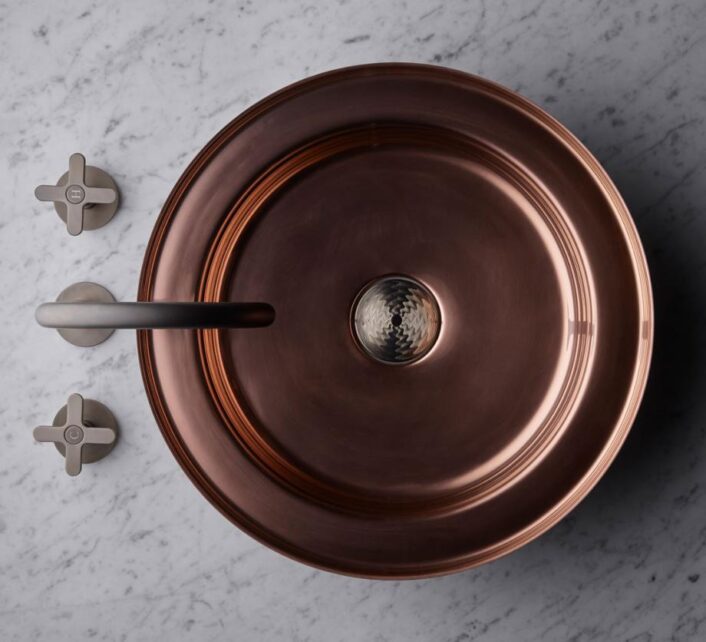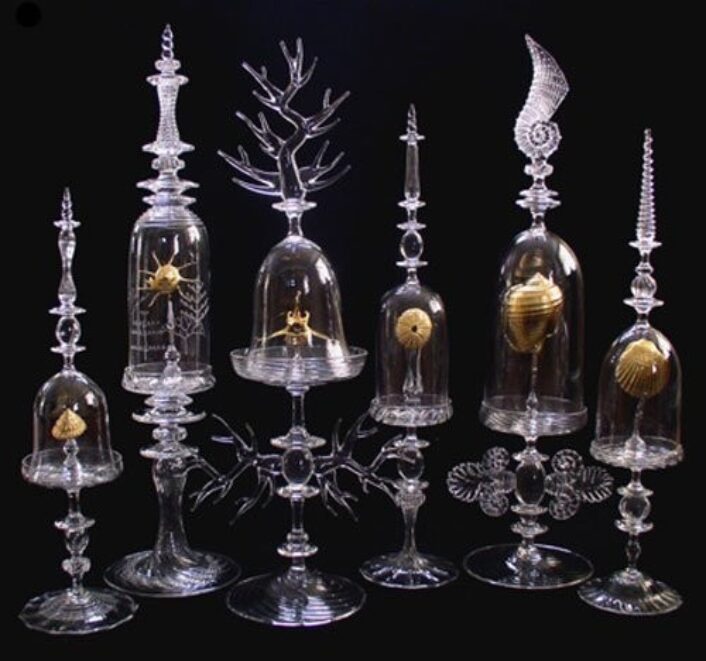Culture
Coppermill Kitchen’s restored vintage copper
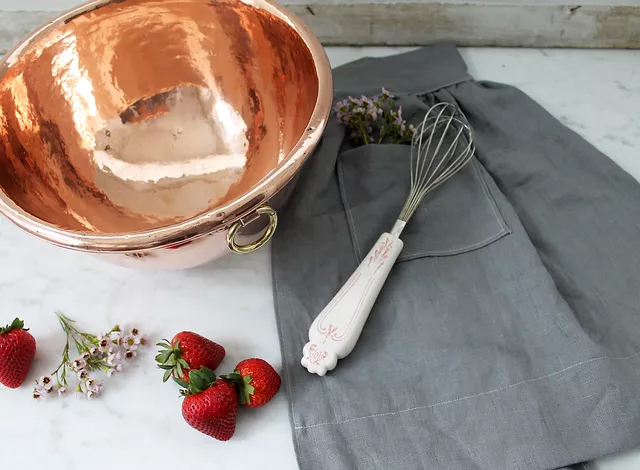
CMK Single Serving Copper Bowl.
This is an original piece that was inspired by a set of vintage bowls that Sweeney found during a trip to Italy. They feature heavy gauge copper and a thick rolled rim. The bottom is branded with the “CMK”(Coppermill Kitchen) logo.
Image courtesy of: Coppermill Kitchen
Beth Sweeney has always loved copper kitchenware; in fact, she registered for Mauviel on her wedding registry. This passion turned into a full-blown career as soon as Sweeney realized that it was only natural to form Coppermill Kitchen. Since she purchased her first copper pot, she has dedicated her life to the craft… searching endlessly for the perfect copper-made pieces.
What drives Sweeney is the story behind each piece… the maker’s marks and special touches, the hand-cut detailing, and the way each one fits within her growing collection.
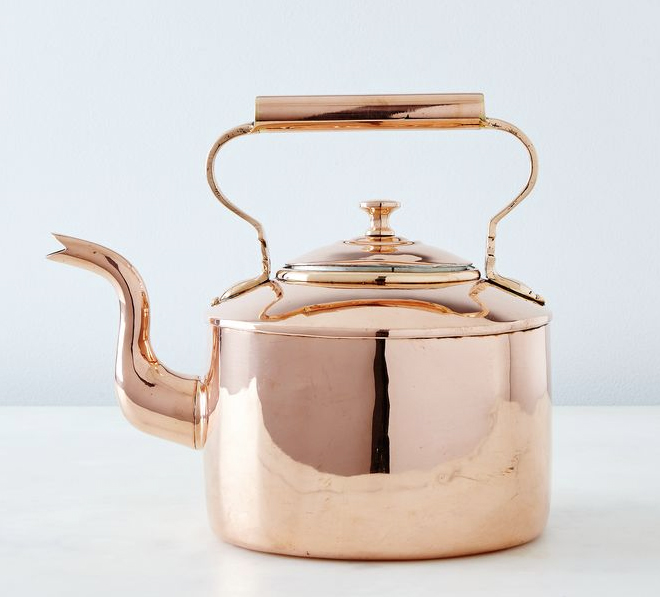
Vintage Copper English Oval Tea Kettle, mid 19th-century.
This perfectly restored and hand-crafted oval tea kettle (circa 1850) is clad with a brass-and-copper handle, brass finial, and tiered lid. The dovetailed seams, a highly prized sign of 19th-century blacksmith, move down the kettle and around the underside.
Image courtesy of: Food 52, photographed by: Rocky Luten
Sweeney was not looking to start a business… it was not the right moment in her life, even though it occurred organically. When Sweeney’s husband fell ill and needed a double-lung transplant, she started collecting copper as a way to raise her spirits. Over a relatively short period of time, Sweeney had amassed one hundred pieces.
As soon as Sweeney’s husband healed, she quit her job and decided to pour her heart 100% into launching a line of restored (and beloved) copper pieces. She says, “We learned, truly, that life is short and that’s not a gimmick.” Her first offering sold out almost instantly… the rest is history!
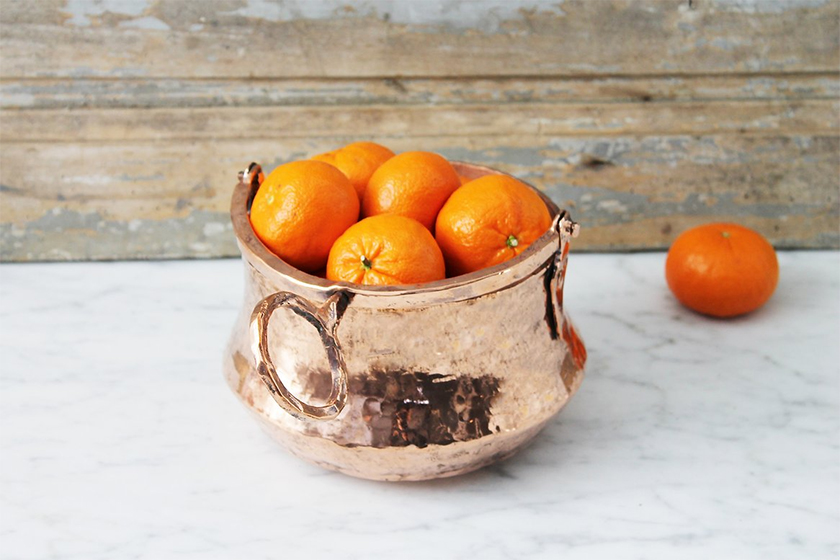
Clementine.
A hand-hammered French cauldron from the early 19th-century. This very heavy and large piece features a thick, hand-cut and hand-forged copper swing handle with a pronounced keyhole. Some additional fun details include an imprinted dotted design alongside the handle and hand-cut triangular flanges on either side. Years ago, this is the sort of piece that might have hung over a fire.
Image courtesy of: Coppermill Kitchen
Copper cookware has been revered in top kitchens for over 500 years. Beyond its aesthetic, which is elegantly pleasing, its ability for superior heat transmission allows for the preservation of the nutritional value as well as the delicate flavors and smells of each unique dish. It was only a matter of time before Sweeney’s love for antique cookware and culinary artistry melded!
Sweeney stumbled upon the material purely by chance. On her first trip to Europe, a buying trip for a former employer, she was searching for vintage silver pieces from London’s grand hotels. Walking through Portobello Market, she came across a woman who was selling restored Georgian copper cookware. Instantly, Sweeney was drawn to the colors and textures… and the rich histories that were connected to them.
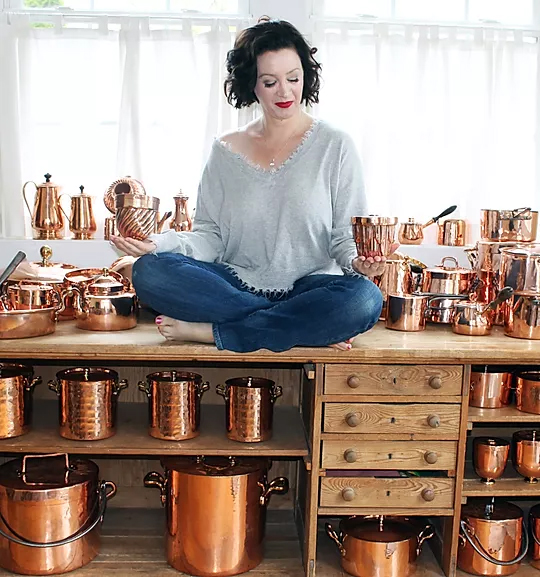
Beth Sweeney and her polished copper pieces!
Image courtesy of: Coppermill Kitchen
The entirety of Coppermill Kitchen is a combination of vintage and reproduced items. The vintage pieces are hand-picked by expert eyes and the reproduced items are based on best-selling antique pieces. The brand seamlessly marries vintage character and modern luxury to present functional and timeless cookware. The restored antique copper cookware includes one-of-a-kind items crafted years ago by artisans from Europe.
Coppermill Kitchen was founded in 2012; in 2013, CMK was launched in an effort to bring a line of reproductions to the public. The idea is that this label continues to expand and make unique copper pieces more accessible to the general population.
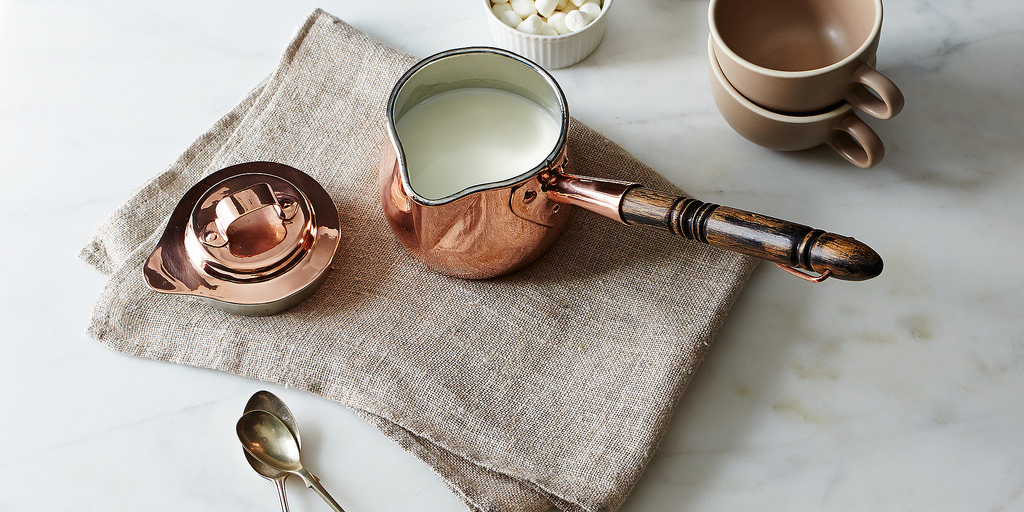
Regarding her vintage pieces, Sweeney says, “I’m super obsessed with finding pieces that have some history stamped on them, like the initial of a previous owner.” She googles, interviews experts, and searches in archival books… digging up whatever information she can find out about a piece. Then, she jots it onto an information card that is included with the object when it is bought.
Image courtesy of: Curious presented by Stratford University, photographed by: James Ransom and Bobbi Lin
Often times, the pieces that Sweeney comes across are so beat up that they don’t even resemble copper. Sweeney says, “We dip them in acid baths for however many days it takes to strip the residue, and then they go through a tinning process and removal of dents. If there’s planish (a very worn spot) those are polished out and sometimes really loose fixtures need to be soldered. Black and rusty pieces can actually take two to three restorations, and I will send them back over and over to be redone. At minimum, it takes a month, I draw all over the pieces with a magic marker to point out flaws that need fixing.”
When hunting for those cherished vintage pieces, Sweeney devotes a lot of attention to a checklist she put together. For example., are there dents that are too ingrained to be polished out? Are the handles too loose to be properly tightened permanently? And sometimes, she has realized, “A piece can be sad, but it can’t be on death’s door. If it’s too gone, I don’t even bother.”
